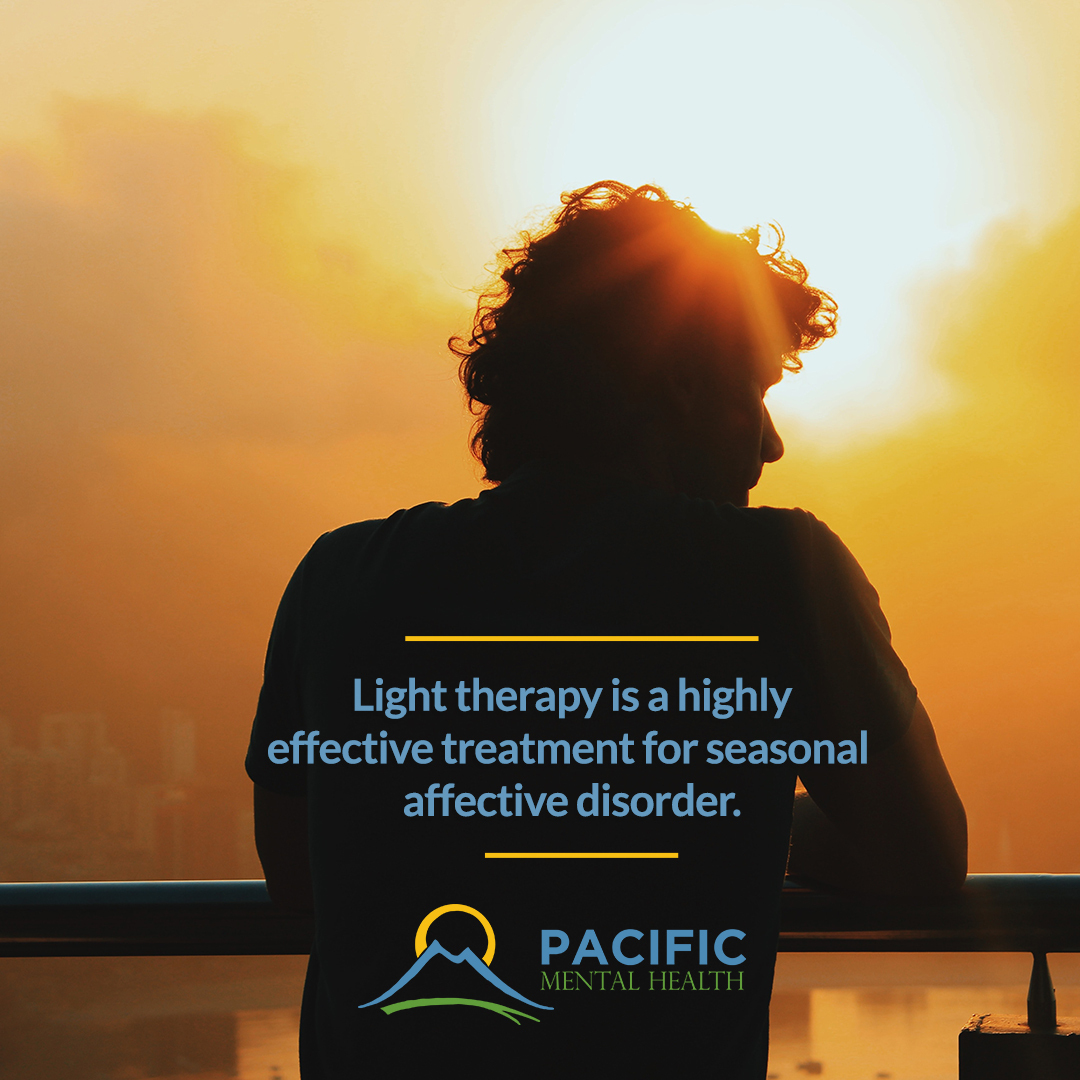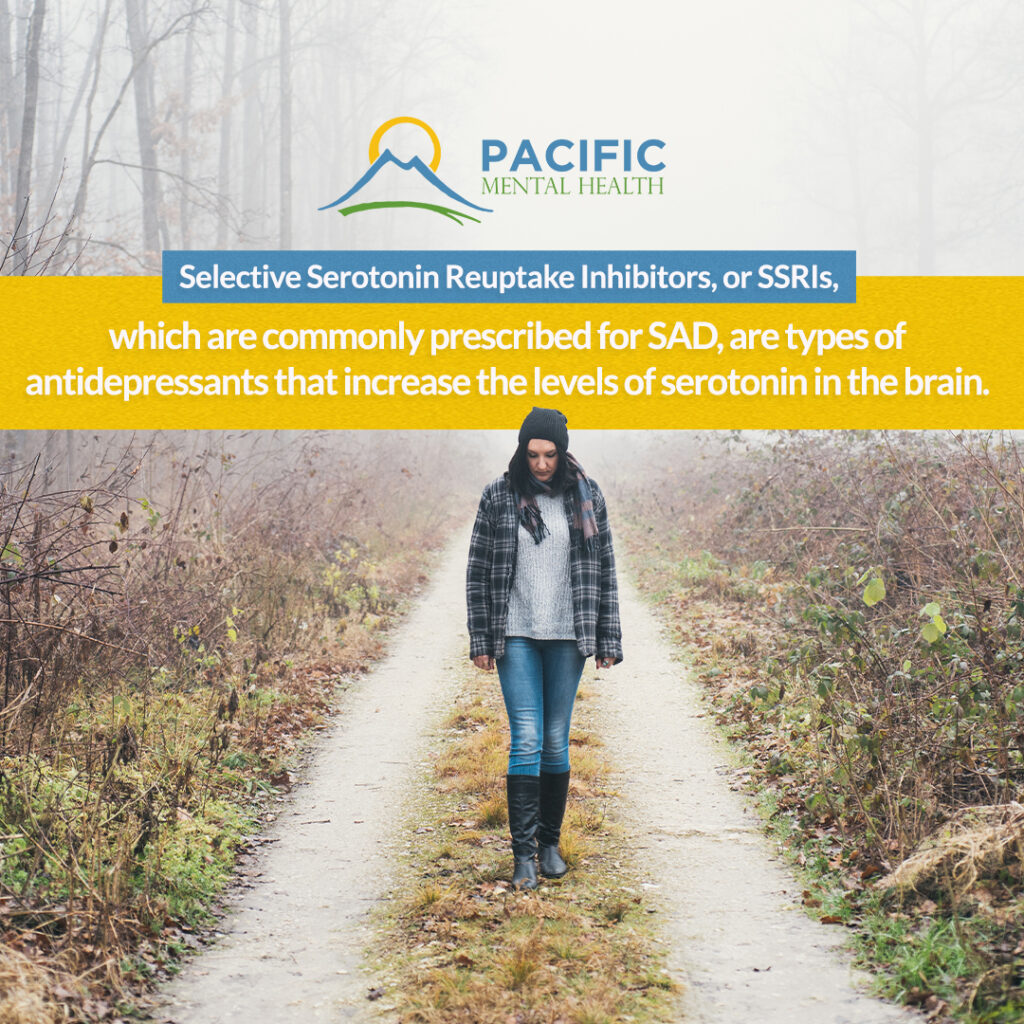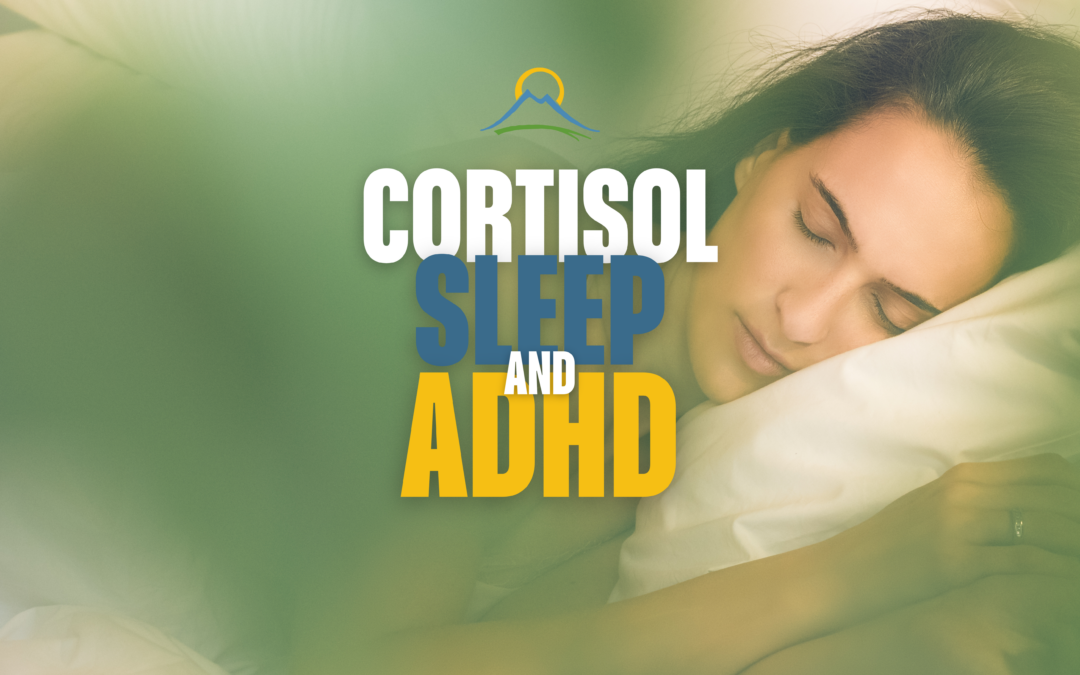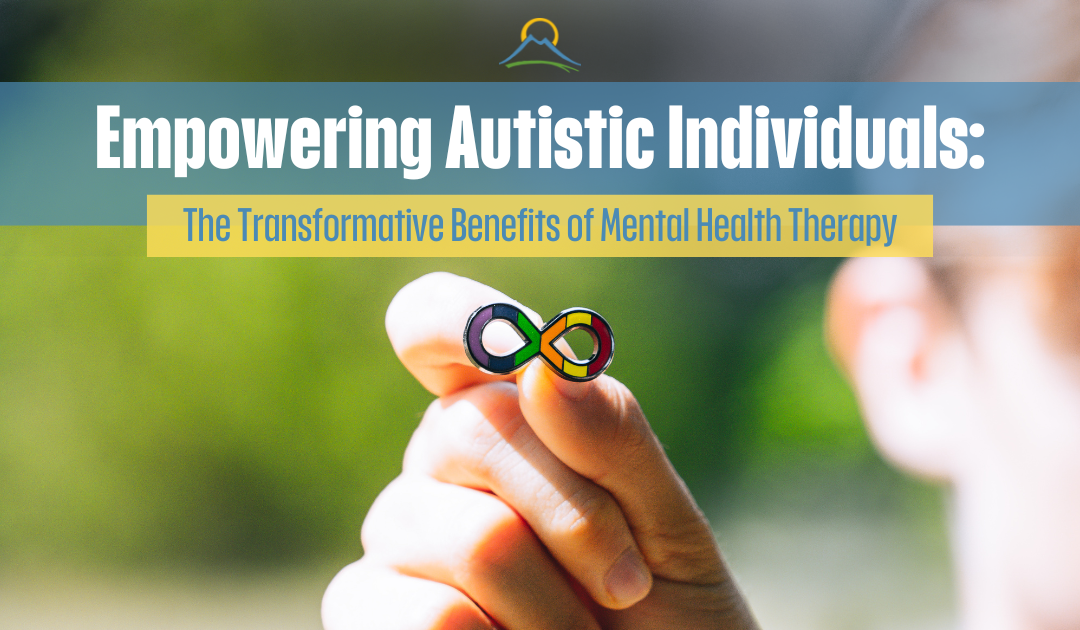Seasonal affective disorder, or SAD, is a depressed response to the short days and long nights that occur around the winter season (Hadsall, 2020). SAD affects an estimated 5% of the US population and affects four times as many women as men (Hadsall, 2020; Rosenthal, 2013). Symptoms, which range from inconveniencing to severely debilitating, can be triggered from stress and can cause a great deal of difficulties in functioning both at work and in our personal lives (Hadsall, 2020; Rosenthal, 2013). SAD can also affect our productivity and keep us from reaching our goals (Tucker, 2016).
Seasonal affective disorder affects our levels of serotonin, which is a brain chemical that affects our moods. The reduced amount of daylight that occurs around the winter season can cause a drop in serotonin levels. SAD can also affect the balance of melatonin levels in our bodies, which can disrupt our mood and sleep patterns. Changes in hormones can contribute to the development of SAD, thus people who are pregnant or have thyroid problems may be more susceptible to SAD (Tucker, 2016).

How SAD Might Manifest
Symptoms of SAD manifest in a number of ways. You may experience:
- Difficulty waking up in the morning
- Difficulty focusing
- Depression, anxiety, hopelessness, or worthlessness.
- Fluctuations in weight with increased or decreased appetite
- Intense feelings of sadness
- Feelings of agitation or sluggishness
- Changes in sleep patterns
- Self-loathing
- Irritability
- Loss of interest in pleasurable activities
- Restlessness
- Frequent crying
- Difficulty making decisions
- Angry outbursts
- Feelings of guilt or shame
- Body aches
- Reckless behavior such as overspending
- Fatigue or loss of energy
- Thoughts of death or suicide (Rosenthal, 2013; Tucker et al., 2016).

Treatment Options For SAD
Medication can be helpful in treating SAD, especially when combined with therapy. Selective Serotonin Reuptake Inhibitors, or SSRIs, which are commonly prescribed for Seasonal affective disorder, are types of antidepressants that increase the levels of serotonin in the brain. SSRIs used to treat SAD include Sertaline (Zoloft), Paroxetine (Paxil), Fluoxetine (Prozac), Citalopram (Celexa), and Escitalopram (Lexapro) (Tucker, et.al, 2016).
Schedule an appointment to meet with a professional counselor or therapist from Pacific Mental Health about S.A.D. or other mental health challenges you are experiencing.
Read more articles written by the counselors at Pacific Mental Health on our blog
References
Hadsall, E. (2020). Conquering the winter blues: over 60 steps to tackle seasonal affective disorder and depression. Independently Published.
Rosenthal, N. E. (2013). Winter blues: Everything you need to know to beat seasonal affective disorder. New York: Guilford Press.
Tucker, M., Price, S., Rose, H. (2016). Seasonal affective disorder: getting through seasonal affective disorder and the winter blues starting now. Independently Published





0 Comments